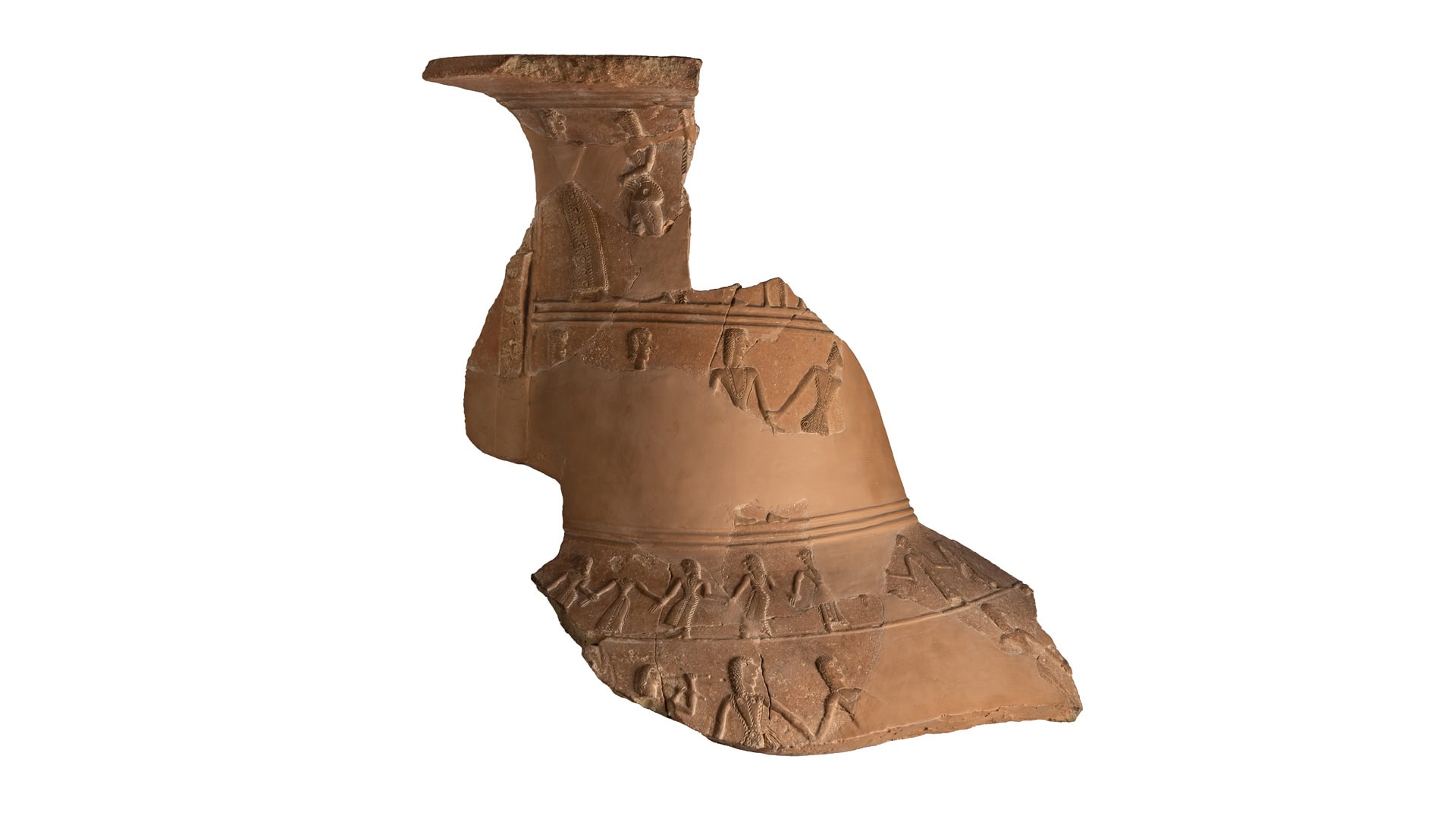Relief pithos with representation of a dance (pithamphora of the “Dance”)

The monumental pithamphora (large vessel) of the “Dance” was found in Xombourgo on Tinos, and more specifically, at the Thesmophorion, the temple dedicated to the cult of Demeter, and dates back to the early 7th c. BC. Xombourgo was the most important urban and “political” centre on the island of Tinos from the Geometric (10th-8th centuries BC) to the Classical period (4th century BC), when it was eventually abandoned.
The representation of the pithamphora of the “Dance” most likely depicts the Athenian hero Theseus and Ariadne, the daughter of the mythological king of Crete, Minos, who helped him to find his way out of the Labyrinth and kill her brother. Ariadne, who had fallen in love with Theseus and wanted to avoid her father’s rage, followed him on his journey to Athens; however, she was abandoned by him on Naxos and was destined to become Dionysos’s wife. The dance of the men and women has been interpreted as the ritual dance (geranos), which Theseus danced on Delos together with the seven youths and seven maidens whom he rescued by slaying the Minotaur in the Labyrinth. The young goddess, through her hierogamy (sacred marriage) to the god Dionysos was to become one of the most important goddesses of the Cyclades, and her myth turned into an identifying element of Cycladic society and religion.